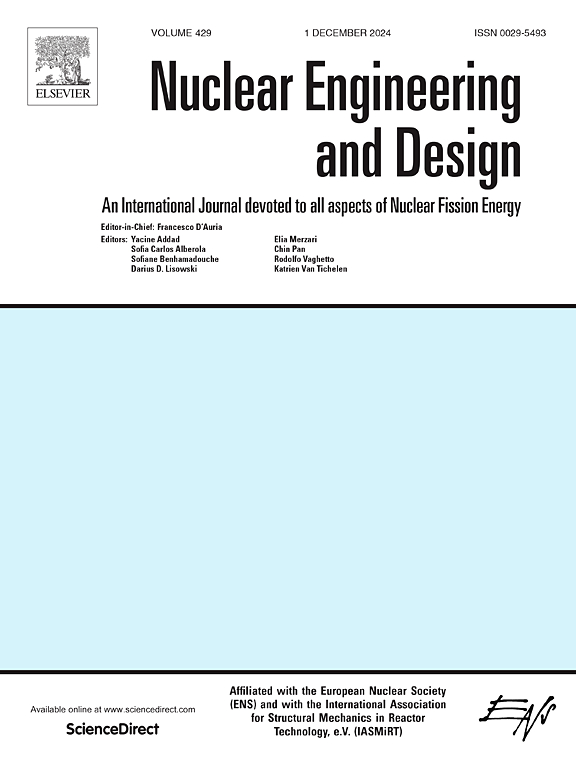Thermal oxidation of nuclear graphite and pyrolytic carbon coatings
IF 2.1
3区 工程技术
Q1 NUCLEAR SCIENCE & TECHNOLOGY
引用次数: 0
Abstract
The oxidation of pyrolytic carbon (PyC) deposited via fluidized bed chemical vapor deposition was characterized and compared with that of standard nuclear-grade graphite. The materials were heated at 700 to 1000 °C in a thermogravimetric analysis system under 20% v/v O2 flow, allowing for direct comparison of dynamic oxidative mass change in each material. Three different PyC samples fabricated under different conditions exhibited variation in total mass loss and mass loss rate, varying by as much as 709 mg/cm2 in total mass loss and 14.2 (mg/cm2)/min in mass loss rate at a single temperature. These variations highlight the correlation between PyC microstructure/defect density and oxidation susceptibility. Additionally, changes in the microstructure and composition between PyC and graphite were characterized via scanning electron microscopy and correlated to the mass loss results. The results of this work have implications toward the safety of tristructural isotropic (TRISO) and other coated particle fuels, especially under off-normal conditions, given the limited information that exists about the oxidation behavior of PyC.
核石墨和热解碳涂层的热氧化
对流化床化学气相沉积法沉积的热解碳(PyC)氧化进行了表征,并与标准核级石墨进行了比较。在热重分析系统中,在20% v/v O2流量下,将材料加热至700至1000°C,从而可以直接比较每种材料的动态氧化质量变化。在不同条件下制备的三种不同的PyC样品的总质量损失率和质量损失率发生了变化,在单一温度下,总质量损失率和质量损失率的变化幅度分别高达709 mg/cm2和14.2 mg/cm2 /min。这些变化突出了PyC微观结构/缺陷密度与氧化敏感性之间的相关性。此外,通过扫描电子显微镜表征了PyC和石墨之间的微观结构和成分的变化,并将其与质量损失结果相关联。这项工作的结果对三结构各向同性(TRISO)和其他包覆颗粒燃料的安全性具有重要意义,特别是在非正常条件下,因为关于PyC氧化行为的信息有限。
本文章由计算机程序翻译,如有差异,请以英文原文为准。
求助全文
约1分钟内获得全文
求助全文
来源期刊

Nuclear Engineering and Design
工程技术-核科学技术
CiteScore
3.40
自引率
11.80%
发文量
377
审稿时长
5 months
期刊介绍:
Nuclear Engineering and Design covers the wide range of disciplines involved in the engineering, design, safety and construction of nuclear fission reactors. The Editors welcome papers both on applied and innovative aspects and developments in nuclear science and technology.
Fundamentals of Reactor Design include:
• Thermal-Hydraulics and Core Physics
• Safety Analysis, Risk Assessment (PSA)
• Structural and Mechanical Engineering
• Materials Science
• Fuel Behavior and Design
• Structural Plant Design
• Engineering of Reactor Components
• Experiments
Aspects beyond fundamentals of Reactor Design covered:
• Accident Mitigation Measures
• Reactor Control Systems
• Licensing Issues
• Safeguard Engineering
• Economy of Plants
• Reprocessing / Waste Disposal
• Applications of Nuclear Energy
• Maintenance
• Decommissioning
Papers on new reactor ideas and developments (Generation IV reactors) such as inherently safe modular HTRs, High Performance LWRs/HWRs and LMFBs/GFR will be considered; Actinide Burners, Accelerator Driven Systems, Energy Amplifiers and other special designs of power and research reactors and their applications are also encouraged.
 求助内容:
求助内容: 应助结果提醒方式:
应助结果提醒方式:


